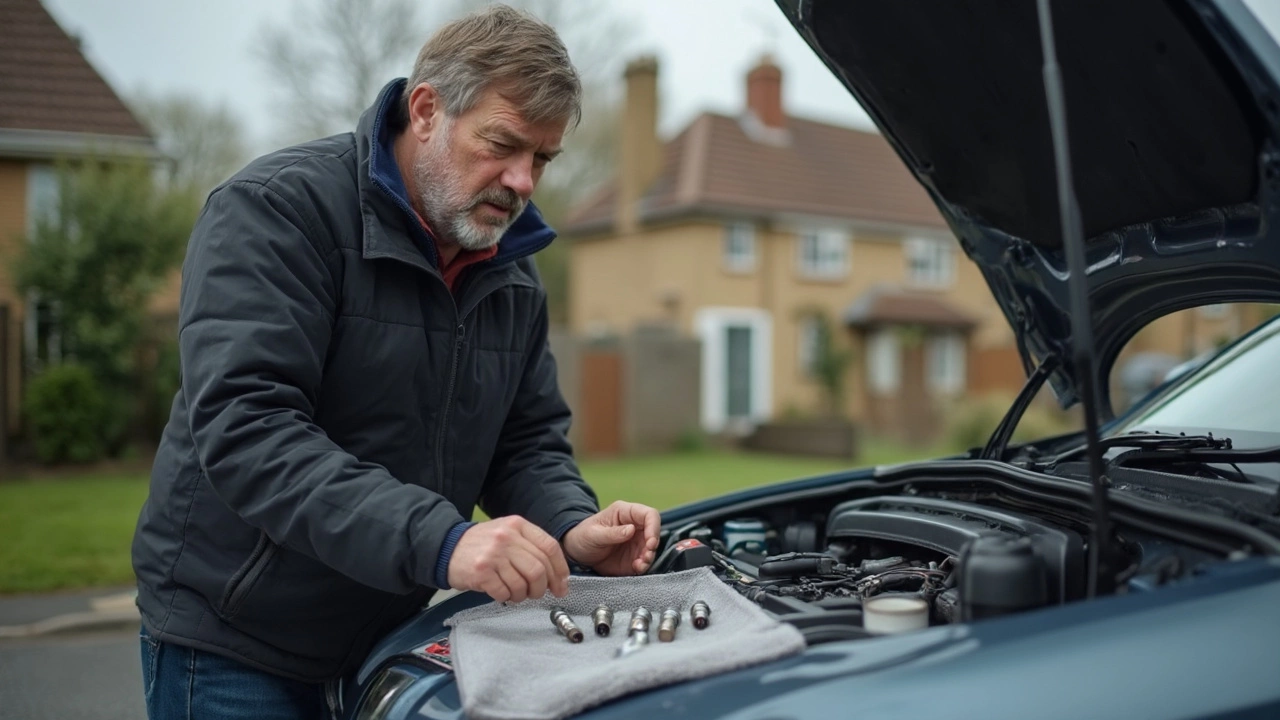Bad Spark Plug? Spot the Signs, Fix It Fast and Keep Your Engine Happy
If your car feels rough, stutters, or just won’t start, a bad spark plug is often the culprit. It’s a cheap part, but when it fails it can make the whole engine misbehave. Knowing the warning signs and how to replace the plug yourself can save you time, money, and a lot of frustration.
What Bad Spark Plugs Do to Your Car
A spark plug’s job is to fire at the right moment and ignite the fuel‑air mix. When it’s worn, fouled, or cracked, the spark can be weak or missing. This leads to a misfire – the engine runs unevenly, idles rough, and you get a loss of power. You might notice a sudden drop in acceleration, a shaky idle, or a “ping‑ping” sound when you’re driving.
Other clues include the Check Engine Light flashing, higher fuel consumption, and difficulty starting the engine on cold mornings. If you’ve ever taken a long time to get moving after turning the key, that could be a spark plug issue.Ignoring these signs can cause damage to other engine parts. A misfiring cylinder runs hotter, which can wear out the piston rings or damage the catalytic converter. Replacing a bad plug early prevents those costly repairs.
How to Test and Replace a Bad Spark Plug
First, locate the plugs – they’re usually on the top of the engine, connected to thick wires or coil‑on‑plug caps. Give the engine a few minutes to cool, then pull the wire or cap off each plug. Use a spark plug socket and a ratchet to unscrew the plug.
Inspect the tip. A clean plug looks light gray and smooth. If it’s black, oily, or has deposits, it’s fouled. Cracks or a broken electrode mean it’s time for a new one. Compare the gap between the electrodes with the spec in your owner’s manual; a small gap can cause weak sparks.When installing a new plug, hand‑tighten it first, then give it a quarter turn with the socket – you don’t want to over‑tighten. Reattach the wire or cap, making sure it clicks into place.
Start the engine. If it runs smoother, the problem is solved. If it’s still rough, you might have more than one bad plug, or another issue like a fuel injector or ignition coil. In that case, a professional diagnosis is wise.
Regular maintenance keeps the plugs healthy. Most manufacturers recommend checking them every 30,000 – 50,000 miles. If you drive in dusty conditions or use low‑quality fuel, inspect them more often.
Remember, a bad spark plug isn’t a mystery – it’s a small, inexpensive part that can cause big headaches. By spotting the symptoms early and swapping the plug yourself, you keep your car running smoothly and avoid costly repairs down the road.
 15 May 2025
15 May 2025
Ignition Coil or Spark Plug Bad? How to Spot the Culprit Fast
Ever wondered if your car troubles come from a bad ignition coil or a dud spark plug? This article digs into the key signs for each problem, offers real-world tests, and tells you which issues demand immediate attention. You'll learn what to listen and look for, how to try basic checks at home, and when it's worth replacing these parts. No fluff, just the info you need for quick, confident troubleshooting. Avoid extra mechanic bills and keep your ride running smooth.






0